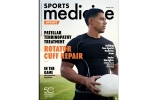Dr. Logan Discusses Building a Sports Medicine Team in AOSSM Sports Medicine Update

In the development of a Sports Medicine Medical Team, team physicians are tasked with supporting athletic performance while optimizing the comprehensive and holistic care of the athlete. In order to best promote the health and well-being of our athletes, the formation of a diverse and agile team is critical.
Team Members
“The acquisition of highly qualified, motivated, and hard-working individuals is essential in providing high quality and efficient health care to the athlete”
- Freddie Fu, MD
Although orthopaedic sports medicine surgeons may serve as the medical director for a team or organization, the true foundation of a successful sports medicine team is the certified athletic trainer. In addition to diagnosing and treating musculoskeletal injuries, the athletic trainer serves as the liaison between coaches, players, physicians, parents, and agents. Importantly, they often have a regular and longitudinal relationship with teams and a high level of player trust.1
Although not typically involved in the day-to-day medical operations, the medical director should have access to an array of specialists to address various athlete needs. An understanding of injury epidemiology within the specific sport will inform the most pertinent specialists which may include:



